1mg
Showing 3201–3250 of 3918 results
-
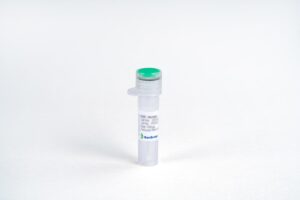
IL-6, Human
$1,177.31 Add to cart View Product DetailsInterleukin-6 (IL-6), also known as BSF-2, CDF and IFNB2, is a pleiotropic cytokine that participates in both pro-inflammatory and anti-inflammatory responses. It is produced mainly by T cells, macrophages, monocytes, endothelial cells and muscle cells. IL-6 binds to IL-6 receptor (IL-6R) to trigger the association of IL-6R with gp130, inducing signal transduction through JAKs and STATs. The biological functions of IL-6 are diverse. It stimulates B cell differentiation and antibody production, myeloma and plasmacytoma growth, and nerve cell differentiation. It also acts as a myokine, produced by muscle cells in response to muscle contraction and released into the blood stream to help break down fats and improve insulin resistance.
-
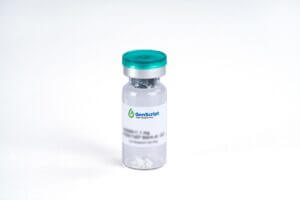
IL-6, Human(CHO-expressed)
$1,138.50 Add to cart View Product DetailsInterleukin-6 (IL-6), also known as BSF-2, CDF and IFNB2, is a pleiotropic cytokine that acts in both pro-inflammatory and anti-inflammatory responses. It is produced mainly by T cells, macrophages, monocytes, endothelial cells and muscle cells. IL-6 binds to IL-6 receptor (IL-6R) to trigger the association of IL-6R with gp130, inducing signal transduction through JAKs and STATs. The biological functions of IL-6 are diverse. It stimulates B cell differentiation and antibody production, myeloma and plasmacytoma growth, as well as nerve cell differentiation. It also acts as a myokine, produced by muscle cells in response to muscle contraction, to be released to the blood stream to help break down fats and improve insulin resistance.
-

IL-6, Mouse
$2,906.63 Add to cart View Product DetailsInterleukin-6 (IL-6), also known as BSF-2, CDF and IFNB2, is a pleiotropic cytokine that participates in both pro-inflammatory and anti-inflammatory responses. It is produced mainly by T cells, macrophages, monocytes, endothelial cells and muscle cells. IL-6 binds to IL-6 receptor (IL-6R) to trigger the association of IL-6R with gp130, inducing signal transduction through JAKs and STATs. The biological functions of IL-6 are diverse. It stimulates B cell differentiation and antibody production, myeloma and plasmacytoma growth, and nerve cell differentiation. It also acts as a myokine, produced by muscle cells in response to muscle contraction and released into the blood stream to help break down fats and improve insulin resistance.
-

IL-6, Rat (HEK 293-expressed)
$2,018.25 Add to cart View Product DetailsInterleukin-6 (IL-6), also known as BSF-2, CDF and IFNB2, is a pleiotropic cytokine that participates in both pro-inflammatory and anti-inflammatory responses. It is produced mainly by T cells, macrophages, monocytes, endothelial cells and muscle cells. IL-6 binds to IL-6 receptor (IL-6R) to trigger the association of IL-6R with gp130, inducing signal transduction through JAKs and STATs. The biological functions of IL-6 are diverse. It stimulates B cell differentiation and antibody production, myeloma and plasmacytoma growth, and nerve cell differentiation. It also acts as a myokine, produced by muscle cells in response to muscle contraction and released into the blood stream to help break down fats and improve insulin resistance.
-

IL-7, His, Human(CHO-expressed)
$2,018.25 Add to cart View Product DetailsInterleukin-7 (IL-7), also known as lymphopoietin 1 and pre-B cell factor, is a hematopoietic growth factor belonging to the IL-7/IL-9 family. It is produced by keratinocytes, dendritic cells, hepatocytes, neurons and epithelial cells. IL-7 binds and signals through IL-7 receptor, a heterodimer consisting of IL-7 receptor alpha and common gamma chain receptor. IL-7 plays a role in regulating early B cell and T cell development. It is also important for optimal dendritic cell-T cell interaction.
-

IL-7, Human
$3,458.63 Add to cart View Product DetailsInterleukin-7 (IL-7), also known as lymphopoietin 1 and pre-B cell factor, is a hematopoietic growth factor belonging to the IL-7/IL-9 family. It is produced by keratinocytes, dendritic cells, hepatocytes, neurons and epithelial cells. IL-7 binds and signals through IL-7 receptor, a heterodimer consisting of IL-7 receptor alpha and common gamma chain receptor. IL-7 plays a role in regulating early B cell and T cell development. It is also important for optimal dendritic cell-T cell interaction.
-
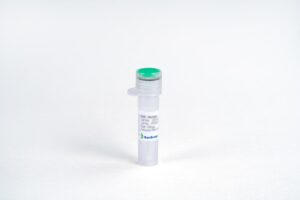
IL-8 (77aa)/CXCL8, Human
$1,323.94 Add to cart View Product DetailsInterleukin-8 (IL-8), also known as CXCL8, GCP-1 and NAP-1, is one of the first discovered chemokines and belongs to the CXCL family, in which the first two conserved cysteines are separated by one residue. In vivo, IL-8 exists in two forms: a 77 a.a. protein produced by endothelial cells, and the more active 72 a.a. protein produced by monocytes. The receptors for IL-8 are the seven-helical G-protein coupled receptors CXCR1 and CXCR2, exclusively expressed on neutrophils. The functions of IL-8 are to induce rapid changes in cell morphology, activate integrins, and release the granule contents of neutrophils. Thus, IL-8 can enhance the antimicrobial actions of defense cells. It is secreted by monocytes, macrophages and endothelial cells. IL-8 signals through CXCR1 and CXCR2 to chemoattract neutrophils, basophils, and T cells. IL-8 is also a potent promoter of angiogenesis. Other functions of this protein, such as involvement in bronchiolitis pathogenesis, have also been reported.
-

IL-8/CXCL8 (77aa), Human(CHO-expressed)
$1,177.31 Add to cart View Product DetailsInterleukin-8 (IL-8), also known as CXCL8, GCP-1 and NAP-1, is one of the first discovered chemokines and belongs to the CXCL family, in which the first two conserved cysteines are separated by one residue. In vivo, IL-8 exists in two forms: a 77 a.a. protein produced by endothelial cells, and the more active 72 a.a. protein produced by monocytes. The receptors for IL-8 are the seven-helical G-protein coupled receptors CXCR1 and CXCR2, exclusively expressed on neutrophils. The functions of IL-8 are to induce rapid changes in cell morphology, activate integrins, and release the granule contents of neutrophils. Thus, IL-8 can enhance the antimicrobial actions of defense cells. It is secreted by monocytes, macrophages and endothelial cells. IL-8 signals through CXCR1 and CXCR2 to chemoattract neutrophils, basophils, and T cells. IL-8 is also a potent promoter of angiogenesis. Other functions of this protein, such as involvement in bronchiolitis pathogenesis, have also been reported.
-
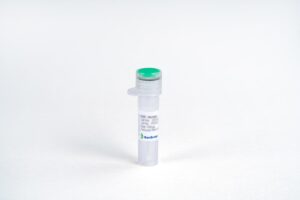
IL-9, Human
$2,018.25 Add to cart View Product DetailsInterleukin 9, also known as IL9, is a cytokine (cell signalling molecule) belonging to the group of interleukins. The protein encoded by this gene is a cytokine produced by T-cells and specifically by CD4+ helper cells that acts as a regulator of a variety of hematopoietic cells. This cytokine stimulates cell proliferation and prevents apoptosis. It functions through the interleukin-9 receptor (IL9R), which activates different signal transducer and activator (STAT) proteins and thus connects this cytokine to various biological processes. The gene encoding this cytokine has been identified as a candidate gene for asthma. Genetic studies on a mouse model of asthma demonstrated that this cytokine is a determining factor in the pathogenesis of bronchial hyperresponsiveness.
-

IL-9, Mouse
$2,018.25 Add to cart View Product DetailsInterleukin 9, also known as IL9, is a cytokine (cell signalling molecule) belonging to the group of interleukins. The protein encoded by this gene is a cytokine produced by T-cells and specifically by CD4+ helper cells that acts as a regulator of a variety of hematopoietic cells. This cytokine stimulates cell proliferation and prevents apoptosis. It functions through the interleukin-9 receptor (IL9R), which activates different signal transducer and activator (STAT) proteins and thus connects this cytokine to various biological processes. The gene encoding this cytokine has been identified as a candidate gene for asthma. Genetic studies on a mouse model of asthma demonstrated that this cytokine is a determining factor in the pathogenesis of bronchial hyperresponsiveness.
-
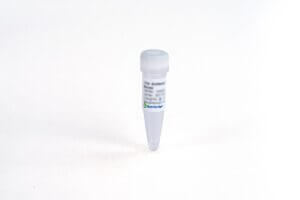
IL6 (55C6), mAb, Mouse
$172.50 Add to cart View Product DetailsInterleukin-6 (IL6) is a multi-functional cytokine, produced by variety of cells including T-cells, B-cells, monocytes, fibroblasts, keratinocytes, endothelial cells, mesangial cells, astrocytes and bone marrow stroma cells. It is involved in the induction of B-cell differentiation, growth promotion of myeloma cells and proliferation and differentiation of T cells. IL6 can regulate immune responses, acute phase reactions and hematopoiesis.
-

IL6 (55E9), mAb, Mouse
$172.50 Add to cart View Product DetailsInterleukin-6 (IL6) is a multi-functional cytokine, produced by variety of cells including T-cells, B-cells, monocytes, fibroblasts, keratinocytes, endothelial cells, mesangial cells, astrocytes and bone marrow stroma cells. It is involved in the induction of B-cell differentiation, growth promotion of myeloma cells and proliferation and differentiation of T cells. IL6 can regulate immune responses, acute phase reactions and hematopoiesis.
-

IP-10/CXCL10, Human
$957.38 Add to cart View Product DetailsIP-10/CXCL10 also known as CXCL10, is originally identified as an IFN-γ-inducible gene in monocytes, fibroblasts and endothelial cells. It has since been shown that IP-10 mRNA is also induced by LPS, IL-1β, TNF-α, IL-12 and viruses. Additional cell types that have been shown to express IP-10 include activated T-lymphocytes, splenocytes, keratinocytes, osteoblasts, astrocytes, and smooth muscle cells. IP-10 is also expressed in psoriatic and lepromatous lesions of skin. The mouse homologue of human IP-10, Crg-2, has been cloned and shown to share approximately 67% amino acid sequence identity with human IP-10.
-

IP-10/CXCL10, Mouse
$2,018.25 Add to cart View Product DetailsTAFA-2 also named FAM19A2 belongs to the TAFA family of chemokinelike proteins. Like other members of the FAM19/TAFA family, with the exception of TAFA5, mature TAFA1 to 4 contain 10 regularly spaced cysteine residues. Human TAFA2 is 97% aa identical to mouse TAFA2. TAFA2 expression can be detected in the central nervous system (CNS), colon, heart, lung, spleen, kidney, and thymus, but its expression in the CNS is 50 to 1000fold higher than in other tissues. Within the CNS, TAFA2 expression is highest in the occipital and frontal cortex (3 to 10fold more abundantly expressed than in other cortical regions) and medulla. The biological functions of TAFA family members remain to be determined, but there are a few tentative hypotheses.
-

KGF/FGF-7, Human
$2,018.25 Add to cart View Product DetailsKeratinocyte Growth Factor (KGF) is a highly specific epithelial mitogen produced by fibroblasts and mesenchymal stem cells. KGF belongs to the heparin binding Fibroblast Growth Factor (FGF) family, and is known as FGF-7. However, in contrast to the FGF-1, which binds to all known FGF receptors with high affinity, KGF only binds to a splice variant of an FGF receptor, FGFR2-IIIb. FGFR2-IIIb is produced by most of the epithelial cells, indicating that KGF plays roles as a paracrine mediator. KGF induces the differen-tiation and proliferation of various epithelial cells, including keratinocytes in the epidermis, hair follicles and sebaceous glands, and is responsible for the wound repairs of various tissues, including lung, bladder, and kidney.
-

KGF/FGF-7, Mouse
$2,018.25 Add to cart View Product DetailsKeratinocyte Growth Factor (KGF) is a highly specific epithelial mitogen produced by fibroblasts and mesenchymal stem cells. KGF belongs to the heparin binding Fibroblast Growth Factor (FGF) family, and is known as FGF-7. However, in contrast to FGF-1, which binds to all known FGF receptors with high affinity, KGF only binds to a splice variant of the FGF receptor, FGFR2-IIIb. FGFR2-IIIb is expressedby most epithelial cells, indicating KGF’s roleas a paracrine mediator. KGF induces the differentiation and proliferation of various epithelial cells such as keratinocytes in the epidermis, hair follicles and sebaceous glands., KGF is also responsible for wound repair of various tissuesincluding lung, bladder, and kidney.
-

KRAS, His, Human (G12C)
$1,293.75 Add to cart View Product DetailsThe KRAS gene provides instructions for making a protein called K-Ras, part of the RAS/MAPK pathway. The protein relays signals from outside the cell to the cell’s nucleus. These signals instruct the cell to grow and divide (proliferate) or to mature and take on specialized functions (differentiate). The K-Ras protein is a GTPase, which means it converts a molecule called GTP into another molecule called GDP. In this way the K-Ras protein acts like a switch that is turned on and off by the GTP and GDP molecules. KRAS is usually tethered to cell membranes because of the presence of an isoprene group on its C-terminus. There are two protein products of the KRAS gene in mammalian cells that result from the use of alternative exon 4 (exon 4A and 4B respectively): K-Ras4A and K-Ras4B, these proteins have different structure in their C-terminal region and use different mechanisms to localize to cellular membranes including the plasma membrane.
-

KRAS, His, Human (G12D)
$1,293.75 Add to cart View Product DetailsThe KRAS gene provides instructions for making a protein called K-Ras, part of the RAS/MAPK pathway. The protein relays signals from outside the cell to the cell’s nucleus. These signals instruct the cell to grow and divide (proliferate) or to mature and take on specialized functions (differentiate). The K-Ras protein is a GTPase, which means it converts a molecule called GTP into another molecule called GDP. In this way the K-Ras protein acts like a switch that is turned on and off by the GTP and GDP molecules. KRAS is usually tethered to cell membranes because of the presence of an isoprene group on its C-terminus. There are two protein products of the KRAS gene in mammalian cells that result from the use of alternative exon 4 (exon 4A and 4B respectively): K-Ras4A and K-Ras4B, these proteins have different structure in their C-terminal region and use different mechanisms to localize to cellular membranes including the plasma membrane.
-
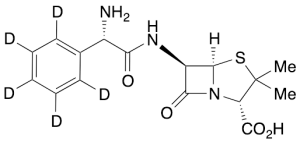
L-(+)-Ampicillin-d5
$258.75 Add to cart View Product DetailsMolecular Formula : C16H14D5N3O4S
-
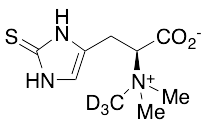
L-(+)-Ergothioneine-d3
$364.84 Add to cart View Product DetailsMolecular Formula : C9 2H3 H12 N3 O2 S
-
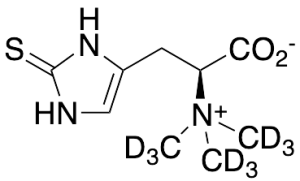
L-(+)-Ergothioneine-d9
$255.30 Add to cart View Product DetailsMolecular Formula : C9H6D9N3O2S
-

L-Alanine-13C3
$78.49 Add to cart View Product DetailsMolecular Formula : 13C3H7NO2
-

L-Anserine-d4 (N-b-alanyl-d4)
$1,133.33 Add to cart View Product DetailsMolecular Formula : C10 D4 H12 N4 O3
-

L-Arginine-13C,d4 Dihydrochloride
$318.26 Add to cart View Product DetailsMolecular Formula : C5¹³CH10D4N4O2 . 2HCl
-

L-Arginine-13C6 Hydrochloride
$178.54 Add to cart View Product DetailsMolecular Formula : 13C6 H14 N4 O2 . Cl H
-

L-Arginine-15N4 Hydrochloride
$206.14 Add to cart View Product DetailsMolecular Formula : C6 H14 15N4 O2 . Cl H
-
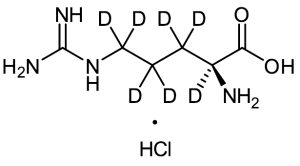
L-Arginine-2,3,3,4,4,5,5-d7 HCl
$56.93 Add to cart View Product DetailsMolecular Formula : C6 D7 H7 N4 O2 . H Cl
-
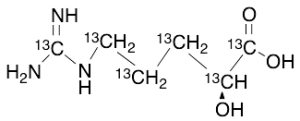
L-Argininic Acid-13C6
$215.63 Add to cart View Product DetailsMolecular Formula : 13C6 H13 N3 O3
-

L-Ascorbic Acid-13C6
$150.08 Add to cart View Product DetailsMolecular Formula : 13C6H8O6
-

L-Balenine Hydrochloride
$224.25 Add to cart View Product DetailsMolecular Formula : C10H16N4O3 • HCl
-
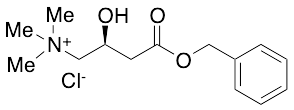
L-Carnitine Benzyl Ester Chloride
$176.81 Add to cart View Product DetailsMolecular Formula : C14 H22 N O3 . Cl
-
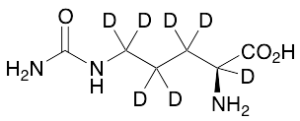
L-Citrulline-d7
$255.30 Add to cart View Product DetailsMolecular Formula : C6 D7 H6 N3 O3
-

L-Cysteine-13C3
$130.24 Add to cart View Product DetailsMolecular Formula : 13C H7 N O2 S
-

L-Cysteine-13C3,15N
$161.29 Add to cart View Product DetailsMolecular Formula : 13C3H715NO2S
-

L-Cysteine-15N
$72.45 Add to cart View Product DetailsMolecular Formula : C3H715NO2S
-

L-Cysteine-3,3-d2
$62.10 Add to cart View Product DetailsMolecular Formula : C3 D2 H5 N O2 S
-
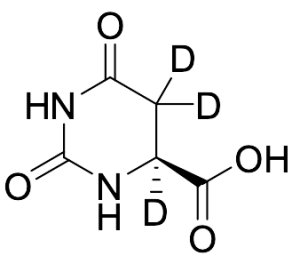
L-Dihydroorotic Acid-D3
$292.39 Add to cart View Product DetailsMolecular Formula : C5 D3 H3 N2 O4
-

L-Formiminoglutamic Acid
$115.58 Add to cart View Product DetailsMolecular Formula : C6 H10 N2 O
-

L-Gamma-Glutamyl-(S)-Allyl-Cysteine
$221.66 Add to cart View Product DetailsMolecular Formula : No Data Available
-

L-Glutamic Acid-13C5,15N
$68.14 Add to cart View Product DetailsMolecular Formula : 13C5 H9 15N O4
-

L-Glutamine-13C5
$91.43 Add to cart View Product DetailsMolecular Formula : 13C5H10N2O3
-

L-Glutamyl-L-cysteinyl-glycine-13C2,15N Sodium Salt
$223.39 Add to cart View Product DetailsMolecular Formula : C813C2H17N215NO6S •xNa
-

L-Glutaryl Carnitine-d6 Chloride
$292.39 Add to cart View Product DetailsMolecular Formula : C12H16D6ClNO6
-

LAG-3 (CD223) Fc Chimera, Human
$1,293.75 Add to cart View Product DetailsLymphocyte activation gene-3 (LAG-3), also known as CD223, is a cell-surface 70kDa molecule belong to Ig superfamily with diverse biologic effects on T cell function. LAG-3 is a CD4 homolog originally cloned in 1990. The gene for LAG-3 lies adjacent to the gene for CD4 on human chromosome 12 (12p13) and is approximately 20% identical to the CD4 gene. human LAG-3 shares 70%, 67%, 76%, and 73% aa sequence identity with mouse, rat, porcine, and bovine LAG-3, respectively. LAG-3 is expressed on B cells, NK cells, tumor-infiltrating lymphocytes, and a subset of T cells. LAG-3 was relatively overexpressed on transgenic T cells rendered anergic in vivo by encounter with cognate self-antigen. LAG-3 negatively regulates murine T cell activation and homeostasis. LAG-3 activates antigen-presenting cells through MHC class II signaling, leading to increased antigen-specific T-cell responses in vivo. Blocking or knocking out LAG-3 in neuronal cultures or in animals mitigated the transmission of α-synuclein between neurons, and dampened accumulation as well as toxic effects of the fibrils on motor function. Anti-LAG3 antibodies are already being tested as cancer treatments, it could also make a useful therapeutic target to treat Parkinson’s and other synucleinopathies.
-

Leptin, Human
$146.63 Add to cart View Product DetailsLeptin is a cytokine belonging to the Interleukin 6 family, and has a four-helix bundle structure. Leptin is encoded by the ob gene, and produced and secreted by white adipose tissue. The receptors of Leptin are Type I cytokine receptors, which exist in two different forms: a short form expressed in multiple tissues, and a long form expressed exclusively in the central nervous system (CNS). Upon binding to Leptin, the receptors activate the JAK/STAT3 pathway and PI3K, and stimulate transcriptional programs that regulate feeding behavior, metabolic rate, endocrine axes, and glucose fluxes. The deficiency of Leptin in human and mouse causes morbid obesity, diabetes, and neuroendocrine anomalies. Leptin also has effects on reproduction and immunity. In summary, Leptin is a pivotal cytokine controlling energy balance, and as such has profound effects on human health.
-

Leptin, Rat
$76.76 Add to cart View Product DetailsLeptin is a cytokine belonging to the Interleukin 6 family, and has a four-helix bundle structure. Leptin is encoded by the ob gene, and produced and secreted by white adipose tissue. The receptors of Leptin are Type I cytokine receptors, which exist in two different forms: a short form expressed in multiple tissues, and a long form expressed exclusively in the central nervous system (CNS). Upon binding to Leptin, the receptors activate the JAK/STAT3 pathway and PI3K, and stimulate transcriptional programs that regulate feeding behavior, metabolic rate, endocrine axes, and glucose fluxes. The deficiency of Leptin in human and mouse causes morbid obesity, diabetes, and neuroendocrine anomalies. Leptin also has effects on reproduction and immunity. In summary, Leptin is a pivotal cytokine controlling energy balance, and as such has profound effects on human health.
-

Levamfetamine-d3 Hydrochloride
$176.81 Add to cart View Product DetailsMolecular Formula : C9 H10 D3 N . H Cl
-

LIF, Human
$1,470.56 Add to cart View Product DetailsLeukemia Inhibitory Factor (LIF) is a pleiotropic cytokine belonging to the long four-helix bundle cytokine superfamily. LIF shares tertiary structure with several other cytokines, including Interleukin-6 (IL-6), Oncostatin M, ciliary neurotropic factor, and cardiotrophin-1, and their functions in vivo are also redundant to some extent. LIF can bind to the common receptor of IL-6 subfamily, gp130, and then recruit its own receptor LIF Receptor to form a ternary complex. The basal expression of LIF in vivo is low; and its expression is induced by pro-inflammatory factors, including lipopolysaccharide, IL-1, and IL-17, and inhibited by anti-inflammatory agents, including IL-4 and IL-13. The functions of LIF include proliferation of primordial germ cells, regulation in blastocyst implantation and early pregnancy, and maintenance of pluripotent embryonic stem cells.
-

LIF, Mouse
$2,117.44 Add to cart View Product DetailsLeukemia Inhibitory Factor (LIF) is a pleiotropic cytokine belonging to the long four-helix bundle cytokine superfamily. LIF shares tertiary structure with several other cytokines, including Interleukin-6 (IL-6), Oncostatin M, ciliary neurotropic factor, and cardiotrophin-1, and their functions in vivo are also redundant to some extent. LIF can bind to the common receptor of IL-6 subfamily, gp130, and then recruit its own receptor LIF Receptor to form a ternary complex. The basal expression of LIF in vivo is low; and its expression is induced by pro-inflammatory factors, including lipopolysaccharide, IL-1, and IL-17, and inhibited by anti-inflammatory agents, including IL-4 and IL-13. The functions of LIF include proliferation of primordial germ cells, regulation in blastocyst implantation and early pregnancy, and maintenance of pluripotent embryonic stem cells.
-

LIGHT, Human
$1,293.75 Add to cart View Product DetailsLIGHT, also known as tumor-necrosis factor (TNF) superfamily member 14 (TNFSF14), is predominantly expressed on activated immune cells and some tumor cells. LIGHT (homologous to lymphotoxin, exhibits inducible expression and competes with Herpes Simplex Virus glycoprotein D for Herpes Virus Entry Mediator, a receptor expressed by T cells), is a protein primarily expressed on activated T cells, activated Natural Killer (NK) cells, and immature dendritic cells (DC). LIGHT can function as both a soluble and cell surface-bound type II membrane protein and must be in its homotrimeric form to interact with its two primary functional receptors: Herpes Virus Entry Mediator (HVEM) and Lymphotoxin-β Receptor (LTβR). LIGHT signaling through these receptors have distinct functions that are cell-type dependent, but interactions with both types of receptors have immune-related implications in tumor biology.






